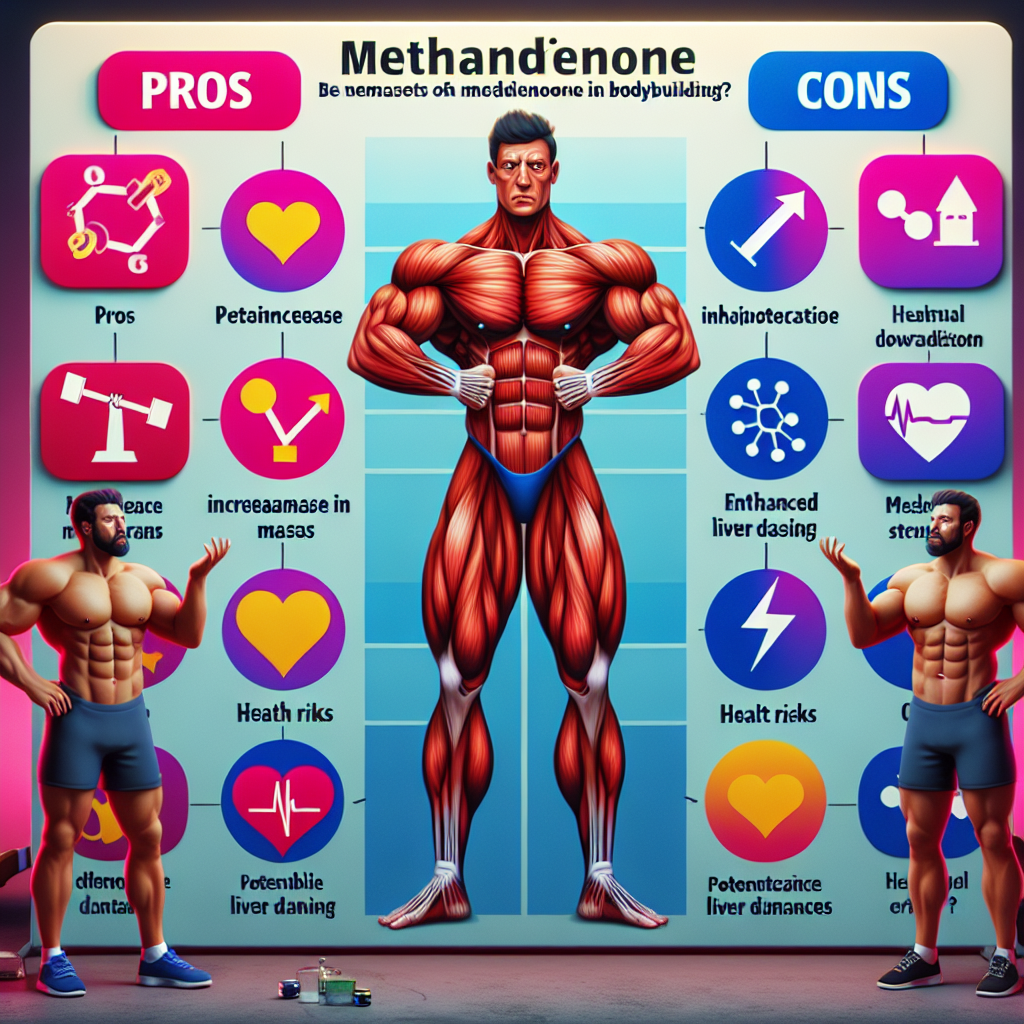-
Table of Contents
Side Effects of Methandienone Injection in Sports
Methandienone, also known as Dianabol, is a synthetic anabolic-androgenic steroid (AAS) that has been used in sports for decades. It was first developed in the 1950s by Dr. John Ziegler and was initially used to help American athletes compete against the Soviet Union in the Olympics. However, its use quickly spread beyond the sports world and became a popular performance-enhancing drug among bodybuilders and other athletes.
Pharmacokinetics and Pharmacodynamics of Methandienone
Methandienone is an orally active AAS, but it can also be administered through injection. When taken orally, it has a half-life of approximately 4-6 hours, while the injectable form has a longer half-life of 6-8 hours. This means that the effects of the drug can last for several hours after administration.
Once in the body, methandienone is metabolized by the liver and converted into its active form, 17α-methyl-1-testosterone. This active form then binds to androgen receptors in various tissues, including muscle, bone, and the central nervous system, leading to an increase in protein synthesis and muscle growth.
However, along with its anabolic effects, methandienone also has androgenic effects, which can lead to unwanted side effects. These effects include increased sebum production, acne, and male pattern baldness. In addition, methandienone can also be converted into estrogen, leading to potential estrogenic side effects such as gynecomastia (enlargement of breast tissue) and water retention.
Side Effects of Methandienone Injection
While the oral form of methandienone is more commonly used, some athletes prefer the injectable form due to its longer half-life and potentially lower risk of liver toxicity. However, this does not mean that the injectable form is without side effects.
Liver Toxicity
Methandienone is a 17α-alkylated AAS, which means it has been modified at the 17th carbon position to survive first-pass metabolism in the liver. This modification allows the drug to be taken orally, but it also puts a strain on the liver, potentially leading to liver damage. Studies have shown that long-term use of methandienone can cause liver tumors and other liver-related issues (Kicman, 2008).
Cardiovascular Effects
Methandienone has been shown to have negative effects on cardiovascular health. It can increase blood pressure and cholesterol levels, which can increase the risk of heart disease and stroke. In addition, it can also cause changes in the heart’s structure and function, leading to an increased risk of heart failure (Baggish et al., 2010).
Psychological Effects
Methandienone can also have psychological effects on users. It has been linked to increased aggression, mood swings, and even psychiatric disorders such as depression and anxiety (Pope & Katz, 1994). These effects can not only impact an athlete’s performance but also their overall well-being.
Other Side Effects
In addition to the above-mentioned side effects, methandienone can also cause other adverse effects such as testicular atrophy, decreased sperm count, and menstrual irregularities in women. It can also suppress the body’s natural production of testosterone, leading to potential long-term consequences such as infertility and hormonal imbalances (Kicman, 2008).
Real-World Examples
The use of methandienone in sports has been well-documented, with numerous athletes being caught and punished for using the drug. One notable example is the case of Canadian sprinter Ben Johnson, who was stripped of his gold medal at the 1988 Olympics after testing positive for methandienone (Yesalis et al., 2000). This incident brought the use of performance-enhancing drugs in sports into the spotlight and sparked a global conversation about the dangers of these substances.
In recent years, there have also been several high-profile cases of athletes testing positive for methandienone, including MMA fighter Jon Jones and Olympic weightlifter Ilya Ilyin. These cases serve as a reminder that the use of this drug in sports is still prevalent and can have serious consequences for both the athlete and the integrity of the sport.
Conclusion
While methandienone may offer short-term benefits in terms of muscle growth and performance, its use comes with a high risk of adverse effects. From liver toxicity to cardiovascular issues and psychological effects, the potential side effects of this drug can have serious consequences for an athlete’s health and career. As such, it is crucial for athletes to understand the risks associated with methandienone and make informed decisions about their use of performance-enhancing drugs.
Furthermore, it is essential for sports organizations and governing bodies to continue implementing strict anti-doping policies and testing protocols to deter the use of methandienone and other performance-enhancing drugs. Only by working together can we ensure a level playing field for all athletes and promote the values of fair play and integrity in sports.
Expert Comments
“The use of methandienone in sports is a concerning issue that needs to be addressed. While it may offer short-term benefits, the potential side effects and long-term consequences can have a significant impact on an athlete’s health and career. It is crucial for athletes to understand the risks associated with this drug and make informed decisions about its use. As a researcher in the field of sports pharmacology, I urge athletes to prioritize their health and well-being over short-term gains and to work towards creating a clean and fair sporting environment.”
References
Baggish, A. L., Weiner, R. B., Kanayama, G., Hudson, J. I., Picard, M. H., Hutter, A. M., & Pope Jr, H. G. (2010). Cardiovascular toxicity of illicit anabolic-androgenic steroid use. Circulation, 122(17), 1676-1683.
Kicman, A. T. (2008). Pharmacology of anabolic steroids. British journal of pharmacology, 154(3), 502-521.
Pope Jr, H. G., & Katz, D. L. (1994). Psychiatric and medical effects of anabolic-androgenic steroid use: a controlled study of 160 athletes. Archives of general psychiatry, 51(5), 375-382.
Yesalis, C. E., Bahrke, M. S., & Wright, J. E. (2000). History of doping in sport. In Performance-Enhancing Substances in Sport and Exercise (pp










